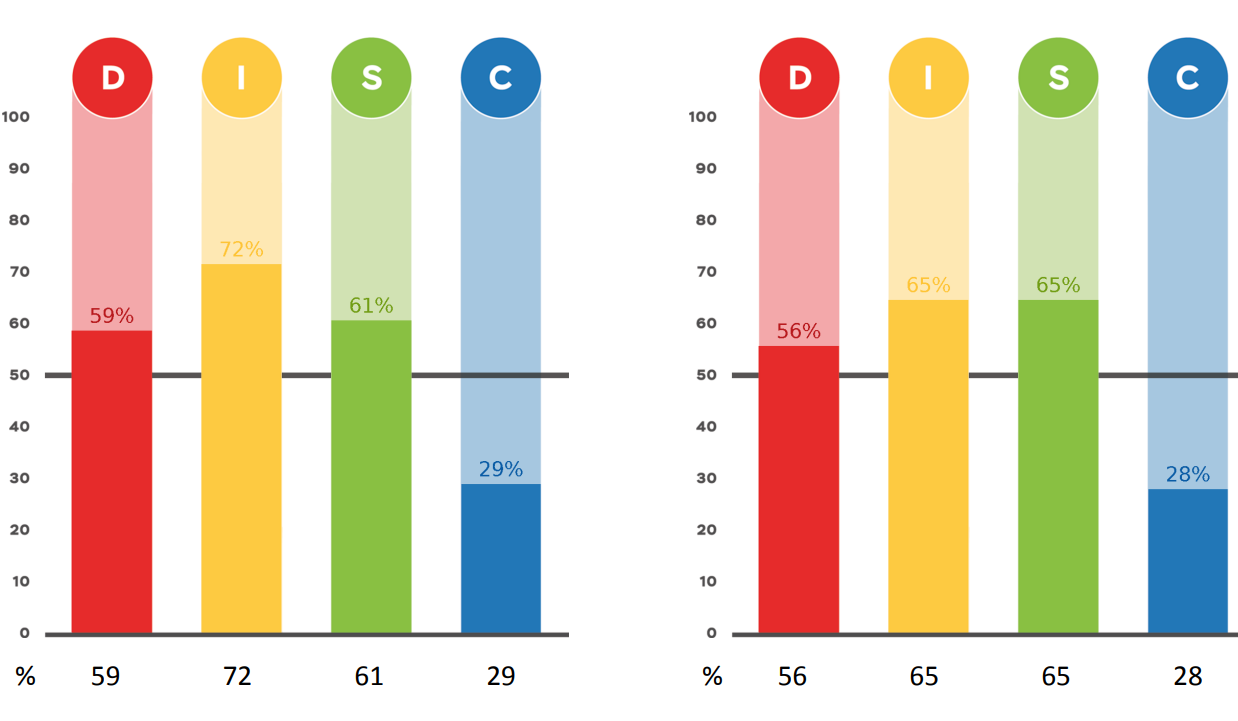Measuring DISC behavioural styles
The DISC analysis is based on the DISC model. This model distinguishes four different behavioural styles, namely:

Basic style VS Response style
So how do you know which behavioural style someone has? In our experience, this is not easy to tell. When someone shows only one prominent behavioural style, it is easier to answer this first question than when someone has a combination of two or more styles strongly represented. Every person exhibits each of the four DISC behavioural styles to a greater or lesser extent. And the combination of the scores on these styles is what you observe in this person in terms of behaviour.
Want a clear and crystallised picture of someone’s score on each of the 4 DISC styles? Then have the person in question fill in our DISC analysis. With our DISC analysis, you get a clear and high-quality report containing a person’s scores on each DISC style. Here, both the behaviour in the natural environment, the basic behaviour, and the work environment, the response behaviour, are mapped out. Wondering what a report looks like? Then take a look at our example reports.
Added value of DISC
You can use DISC analysis to gain insight into people’s behavioural preferences in a simple way. This can add value at both individual and group level. Examples include:
- Recruitment; do the job requirements match someone’s profile.
- Coaching; what is someone’s need.
- Training; increasing insights and mutual understanding.
- Team development; what are strengths and development points.
- HR management; in what place does someone perform best.
DISC analysis can therefore help with understanding, awareness and development of people. It is an accessible tool which can ensure that processes move faster and insights are gained sooner.
You are not tied to anything. Feel free to look around.